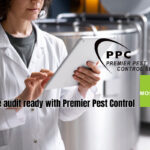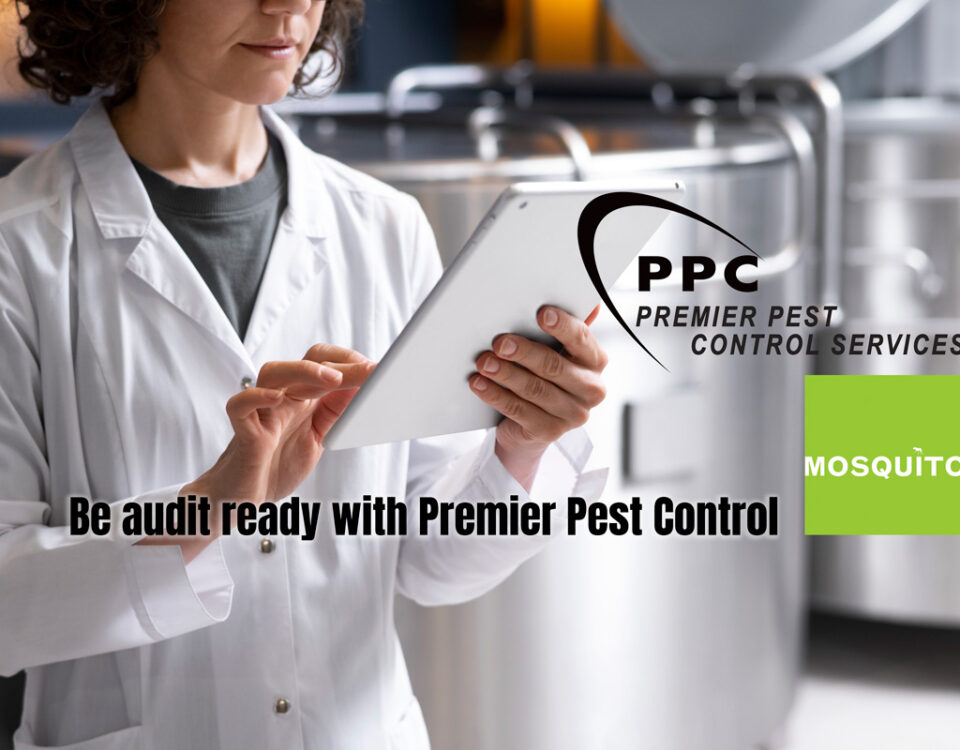
Preparing for Your Pest Control Audit: A Guide for the Food Industry
September 3, 2024Critical Pest Control Issues for Food Industry Managers
For managers in the food industry, pest control is a critical aspect of maintaining food safety and compliance. Here are some of the most important pest control issues that should considered:
- Emergency Response Planning
- Emergency Response: Having a well-defined emergency response plan in place for dealing with a significant pest outbreak is vital. This should include immediate containment, communication protocols, and remediation steps. Employing the correct pest control contractor is vital.
- Regulatory Compliance
- BRC, SALSA, and Retailer Specifications: Adhering to standards set by the BRC, SALSA, retailer and legal requirements is essential. Non-compliance can lead to failed audits, fines, or even shutdowns.
- Documentation and Traceability: Ensuring that all pest control activities are properly documented and traceable is crucial. This includes maintaining records of inspections, treatments, and corrective actions, all of which should be easily accessible during audits.
- Integrated Pest Management (IPM)
- Preventative Measures: Focusing on preventative strategies rather than just reactive measures is key. This includes regular site inspections, monitoring, hygiene practices, and structural maintenance to prevent pest entry and harbourage.
- Risk Assessment: Regularly conducting and updating risk assessments to identify potential pest threats and high-risk areas within the facility. This helps in prioritizing pest control efforts and resources effectively.
- Pest Monitoring and Detection
- Early Detection Systems: Implementing effective monitoring systems such as traps, pheromone detectors, and electronic monitoring devices to catch pest issues early before they escalate.
- Data Analysis and Trends: Regular analysis of pest activity data to identify trends and patterns. This information can help in predicting future infestations and taking pre-emptive actions.
- Pest-Proofing
- Facility Maintenance: Ensuring that the building is well-maintained and pest proofed. This includes sealing entry points, repairing damaged structures, and ensuring that doors, windows, and vents are closed and secure.
- Hygiene Practices: Maintaining high standards of cleanliness in all areas of the facility, as poor standards of cleanliness is a major attractant for pests.
- Effective Use of Pesticides
- Targeted Application: Using pesticides only when necessary and in a targeted manner to minimize the impact on food products, the environment, and human health.
- Resistance Management: Avoiding overuse of any one type of pesticide to prevent pests from developing resistance. Rotating different types of pest control methods and products can help in managing this issue.
- Staff Training and Awareness
- Training Programs: Ensuring that all relevant staff members are trained in pest awareness and know how to identify signs of infestation. This includes understanding the importance of proper storage practices and cleanliness.
- Regular Updates: Keeping staff informed about any changes in pest control protocols or regulations to ensure they are always following best practices.
- Fly Control
- Fly Management Systems: Implementing effective fly control strategies, especially in areas where food is processed or stored. This includes the use of fly screens, air curtains, and fly control units.
- Regular Servicing: Ensuring that fly control units are located correctly, regularly serviced and that bulbs or attractants are replaced as needed to maintain effectiveness.
- Bird Control
- Exclusion and Deterrence: Birds can be a significant pest in food facilities. Implementing bird deterrent systems such as netting, spikes, or sonic devices can prevent them from roosting and contaminating food areas.
- Regular Inspections: Conducting regular inspections of the facility's exterior and roof areas to identify and address any bird-related issues promptly.
- Supplier and Contractor Management
- Contractor Audits: Regularly auditing pest control contractors to ensure they meet the required standards and are providing effective service.
- Supplier Vigilance: Ensuring that raw materials suppliers also adhere to strict pest control measures to prevent contamination at the source.
By staying vigilant and addressing these key pest control issues, managers can ensure that their food facilities remain compliant, safe, and pest-free, ultimately protecting both the product and the business reputation.




